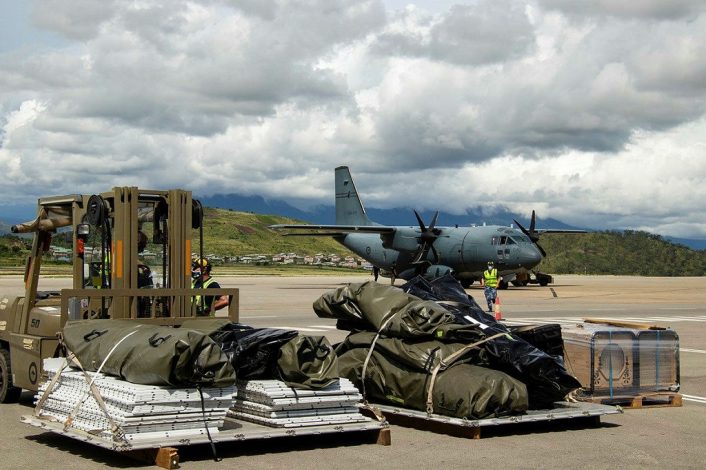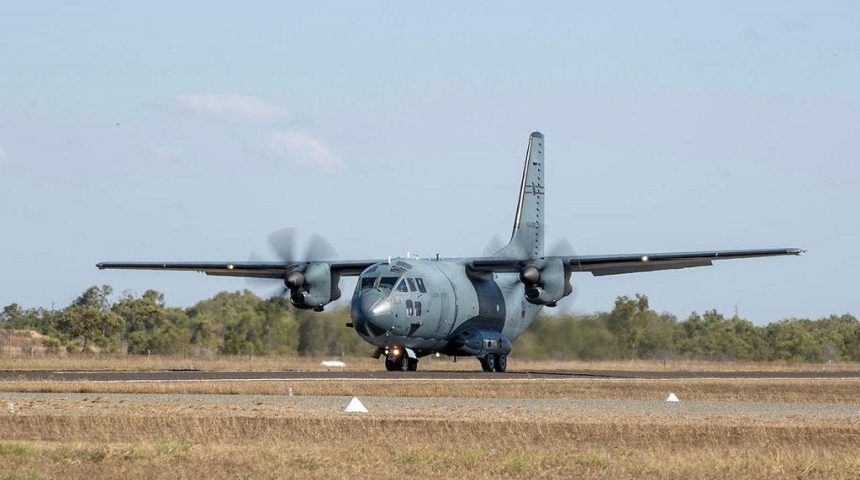The RAAF C-27J Spartan will enhance the role of the Defence helicopters thanks to its higher range and flexibility.
The Australian Department of Defence announced that the role of the RAAF (Royal Australian Air Force) C-27J Spartan is being redefined to enhance the Department’s support for humanitarian disaster relief, crisis response and regional engagements, allowing the country to better respond to natural disasters in Australia and its near region, regional engagement across the Indo-Pacific and the Australian Defence Force’s military logistics and air mobility capability.
The Chief of the RAAF, Air Marshal Mel Hupfeld, said the Spartan’s capabilities were aligned with Defence’s strategic objectives to shape Australia’s strategic environment, deter actions against the nation’s interests and when required, respond with credible military force. The RAAF has been working for some years to introduce new capabilities on the C-27J, like the Compact Rescue Systems for Search And Rescue (SAR) missions, and already used the cargo aircraft during emergency scenarios like the bushfire crisis.
“The Spartan demonstrated its specific capabilities during the 2019/20 Australian bushfire crisis by safely evacuating 2,400 fire-affected community members and resupplying remote communities that were inaccessible by larger aircraft, which included moving 300,000 kilograms of cargo,” Air Marshal Hupfeld said. “The Spartan conducted these missions at a range that exceeded the ability of Defence helicopters because of its flexibility and the inherent operational characteristics of a light tactical fixed wing aircraft.”

The importance of the C-27J Spartan for the RAAF has been proved again recently both during international exercises and real contingency response missions where it provided assistance to regional neighbours. “The use of the Spartan on exercises such as Arnhem Thunder and Talisman Sabre to deliver vital stores to expeditionary airbases, showcases its ability to reach remote and austere airbases”, said the Head of Air Force Capability, Air Vice-Marshal Cath Roberts. “And it has also recently transported medical supplies and equipment to Port Moresby to assist PNG in the fight against COVID-19; as well as contributed to Australia’s support to regional maritime security and fisheries protection on the high seas through deployments on Operations Resolute and Solania.”
The No. 35 Squadron, based at RAAF Base Amberly, operates a fleet of 10 C-27J Spartan aircraft, the first of those arrived in Australia in 2015. The multi-mission military transport aircraft complements the larger C-17 Globemaster III and C-130J Super Hercules within the Australian air mobility fleet, conducting a wide variety of missions which span from the airlift of cargo loads, to the airdrop of paratroops, to the aeromedical evacuation and SAR support.
Needless to say, the humanitarian disaster relief support role of the RAAF C-27J is just one of the missions the Spartan can carry out. Its mission flexibility is proved by the wide variety of missions the aircraft conduct flying with several operators all around the world. Today Leonardo’s C-27J Spartan is considered one of the most effective multi-mission airlifters of its category, the only one specifically designed to support the “last mile” operations, with significant combat experience.
For instance, the JCA (Joint Cargo Aircraft) – the US C-27J Spartan – had its combat debut in Afghanistan in 2011, supporting coalition forces at forward operating bases with airlift and airdrop mission. As often explained here at The Aviationist, the Italian Air force is among the Spartan operators still successfully performing in the most hostile areas, flying as an airlifter in the Afghan and Iraqi theatres. Moreover, the EC-27J JEDI, a derivative version extensively modified to perform Electronic Warfare missions, is still deployed to Erbil, Iraq supporting the coalition against Daesh and last February the unit celebrated the achievement of 5,000 flight hours flown by EC-27J JEDI over Iraq since Aug. 10, 2016.
Also the Romanian Air Force operated their C-27Js aircraft in Afghanistan, while the Lithuanian Air Force, another operator that can rely on Spartan’s DASS defence system, further to Afghanistan and Iraq, deployed in 2014 its C-27Js in support to the French-led operation Sangaris, aimed at stabilizing the security situation in the Central African Republic. In addition, all of the above Air Forces use the C-27J as protected VIP transport, where particular safety care is needed.









